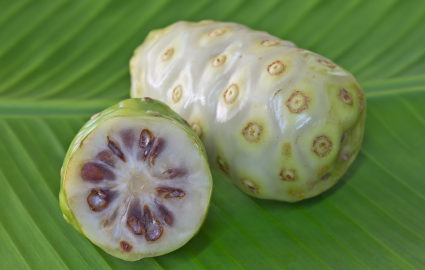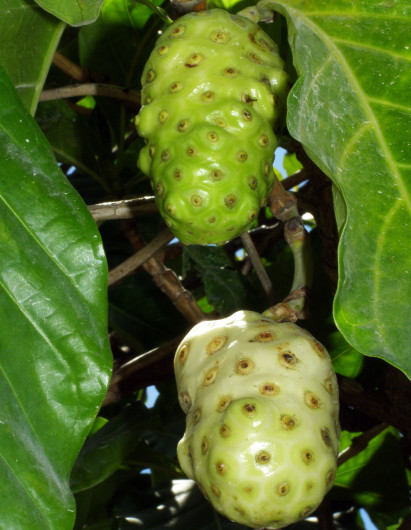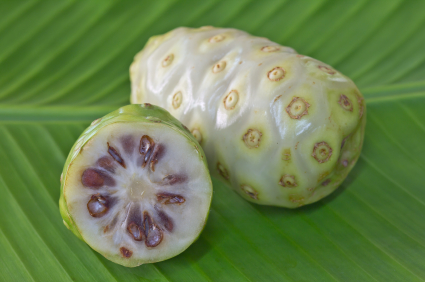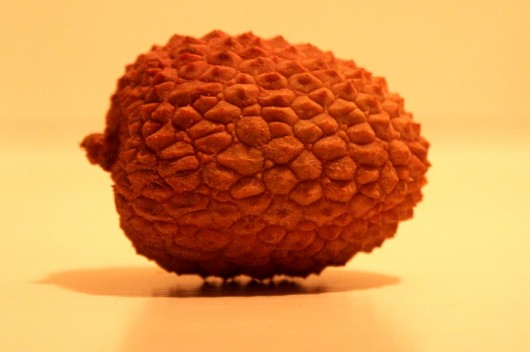Noni, Can This Snake Oil Be Trusted At All?

General Information
Noni is one of those natural remedies that was hyped up as a miracle cure for everything to cancer. Together with MLM type sales it got a really bad reputations. But this is not fruits fault. Here are a few facts that you should know about noni. The official name for this plant is Morinda citrofolia. It has also been called Indian Mulberry. Noni is a plant that is native to the Pacific Islands, Australia and Asia. The plant grows well in the volcanic ash and rock found on many of the islands. It grows as a flowering shrub and reaches up to ten feet in height. The small white flowers grow into a yellow fruit that has a pungent odor. Because of its odor, it is sometimes called vomit fruit. The fruit grows to about the size of a potato and has been used for hundreds of years in traditional Polynesian medicine.
The islanders used the fruit for conditions such as diarrhea, constipation, infections, joint pain, menstrual disorders, urinary pain, and mouth sores. The leaves were used for wound healing and skin conditions. When heated, the leaves were used as a poultice for coughs and colic.
Superfood Attributes
A superfood is a food that is rich in components that can fight disease. Noni is a great source of antioxidants, vitamins and minerals. Antioxidants are known to help slow the effects of aging and to help avert the development of certain diseases. It also contains all nine essential amino acids. Noni fruit is also rich in anthraquinones and polysaccharides that have specific health benefits. It contains xeronine which the body uses to activate enzymes and build proteins.
Health Benefits
In more recent years, Noni has been touted to help numerous health conditions. These claimed health benefits include arthritis, chronic fatigue syndrome, atherosclerosis, menstrual disorders, constipation, bowel problems, hypertension, cancers, indigestion, stroke, gastric ulcers, heart disease, diabetes, kidney disease, and immune disorders.
Laboratory research indicates that noni has tumor-fighting, immune-stimulating, and antioxidant properties. Other research shows that it inhibits the growth of cancer cells due to its antioxidant value. Another study in Germany determined that noni fruit juice can relieve joint pain and arthritic inflammation.
Noni is also shown to have anti-ulcer benefits by limiting the acid in the stomach and increasing the amount of mucous to protect the lining of the stomach. When used topically, noni can help heal burns and skin disorders.
The plant also contains a component that activates the serotonin brain receptors. Serotonin plays a role in mental health, regulating body temperature, hunger, sleep, and sexual behavior. When the body does not have enough serotonin it can develop depression, Alzheimer’s, migraines, obesity, and other diseases.
How to Use It?
The noni fruit has a strong odor and taste, so it is generally combined with other juices such as orange or grape to make it more palatable. To juice the fruit, remove the peel and place the flesh into a blender. Puree until it becomes liquid. Pour the liquid through a sieve and push the juice through with a spoon. You can drink the liquid as is, or mix with another juice to help improve the taste.
Many islanders eat the fruit either raw, or cooked. It is often used in a curry. To make a curry, chop the unripe noni fruit into stir-fry sized pieces and cook it with broccoli and/or cauliflower. Add curry paste and coconut milk and bring to a boil. Reduce heat and allow it to simmer for ten minutes or until the noni fruit is softened.
Noni fruit is also available in tablets or capsules.


